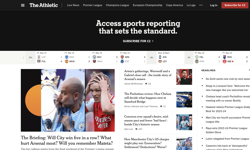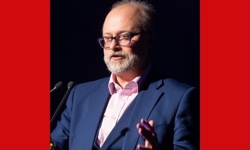1. Vanity publishing.
Just what is vanity publishing? In her keynote speech, Trinity Mirror’s Sly Bailey said, "We’re in the business of building a business; not of building unique users and then sitting down five years later and wondering how to make money out of it." "Pre-revenue businesses", she continued, "are an interesting concept. We’re used to seeing pre-profit businesses. If there is not a good business model, then it will not survive." Maybe, it’s all a matter of timing; perhaps ‘vanity publishing’ is simply to continue loss-making publishing beyond a time when you can reasonably have been expected to make a profit! But, where do you draw that line? I would guess that the Guardian’s Emily Bell might give it longer than Sly. Emily talks of the need to continue "investing even when times are tough". If, fundamentally, you believe that the potential audience for your content, (which, in the Guardian’s case, is "liberal journalism"), then, she says, the primary task is to continue building that audience and "the dollars will follow the audience".
2. Growth of video.
The huge growth of video kept coming up throughout the day. "Eighteen months ago", said Emily Bell, "none of the main UK media sites had video." Now look at them! Endemol’s Peter Cowley enthused, "What excites me is the fact that we’re at the tipping point where the digital environment can support video content." "In terms of TV", he went on, "there will be a big shift to on-demand viewing, which will have a huge impact on the TV industry as it takes us away from a one-to-many model towards peer-to-peer communication." Emarketer’s Geoff Ramsey said, "We are undergoing a video revolution right now; compared with TV, online video has greater measurability, targetability, share-ability." Geoff also urged us to "Remember AIDA!" (Attention, Interest, Desire, Action), because, whilst everyone bangs on about search, it is often the other marketing messages received prior to search that are the key drivers. Therefore, publishers need to invest in video and display to build awareness, interest and desire.
3. Social networks – handle with care.
According to I-Level’s Andrew Walmsley, "The whole media of social networks changes the contract between the producer and the consumer; consumers used to accept ads when they bought a paper or watched ITV, because they saw it as ‘their’ paper or show. On social networks, people see it as ‘our’ media and advertisers do not necessarily have a right to be there. So, advertisers need to get engaged and do original things to engage the audience." Geoff Ramsey had four strategies for publishers trying to tap into social media. Firstly; look, listen, lounge and learn (so as to increase your understanding of the audience and their language). Secondly, partner with existing social portals. Thirdly, find ways to embed your branded content in conversations and communities, and, lastly, provide the tools for easy sharing.
4. The iPhone – changing the mobile landscape.
comScore’s Herve Le Jouan said, "Owners of the iPhone are big consumers of the mobile internet." Peter Cowley predicted a breaking down of mobile’s walled gardens: "The iPhone will revolutionise the way content is consumed on the phone." And, perhaps, just in the nick of time. FremantleMedia’s Robert Marsh complained that they had "not yet found a sustainable commercial model for pushing content via mobile – and not for want of trying." For her part, ITV’s Melissa Goodwin, believes that 2010 will be the year of the mobile. Despite the advances made by the iPhone, web usage on the mobile was still not instinctive for users. She still overhears iPhone-owning friends saying "I’ll look that up when I get home!" (I know from personal experience that this will change very quickly. My wife recently got one, and I would estimate that 90% of her internet and email usage is now done via her iPhone.)
5. The changing face of the user.
AKQA’s Ajaz Ahmed identified three profound trends, "never seen before". Firstly, the "incredible rise of the consumer as a creator." 14 year old Fred gets the same number of views for his YouTube video series as watch Coronation Street! Secondly, and closely related, is the "rise of Channel Me" in the shape of Facebook, MySpace and Bebo, where users have shown that "people are more interested in content about themselves, their friends and their family." The third trend was the power of search, which, when coupled with the first two, helped ensure that the "best gets the audience". Despite the identification of these broad trends, Clay Shirky is quick to point out that, when all is said and done, there is "no such thing as an average user". He illustrated this point by looking at the entry for Doctor Who on Wikipedia. To date, it had had 8,851 edits by 3,311 contributors. Yet the average number of edits per contributor of 2.67 was a completely meaningless statistic, because, the commonest pattern, by far, was: one edit once. Fortunately for Wikipedia, there was one extremely active user. Yet this situation is entirely typical, if, and this is the crucial part, the audience and site traffic are big enough.
And, finally, two more thoughts from the day to leave you with. Firstly, that now, "everyone is in competition with everyone else" (Clay Shirky) and, secondly, to succeed online, "we need to be in a permanent state of innovation" (Sly Bailey). In short, there’s no rest for the wicked.
FEATURE
AOP’08
The great and the good of the online world gathered at the Park Lane Hilton on 1st October for the UK Association of Online Publishers’ annual conference. James Evelegh was also there and, here, picks out the main themes.










